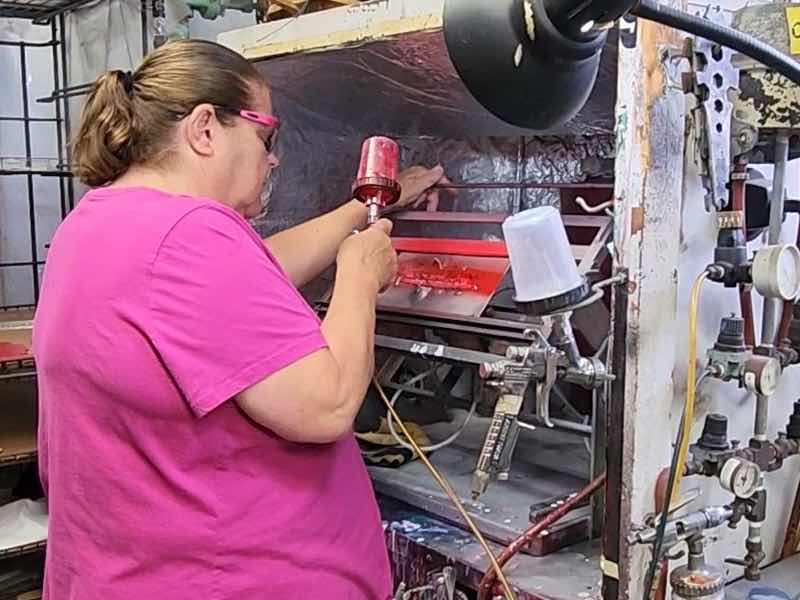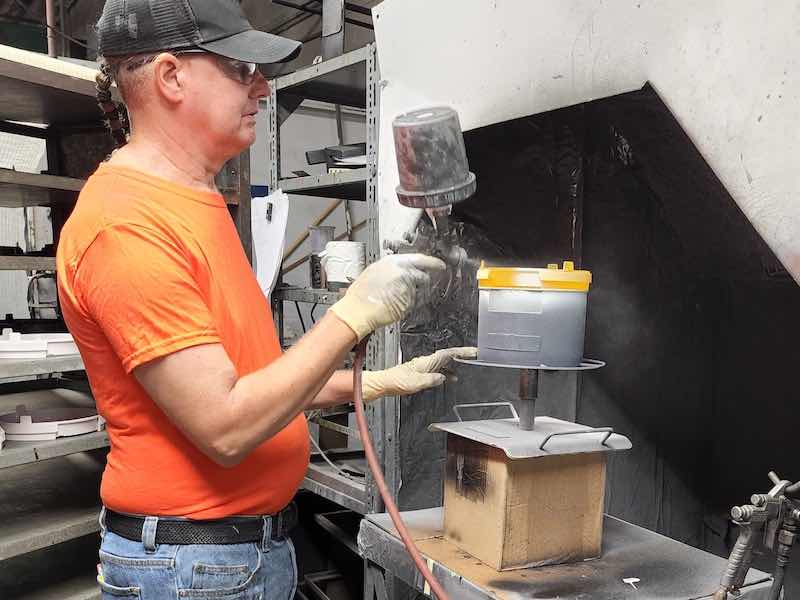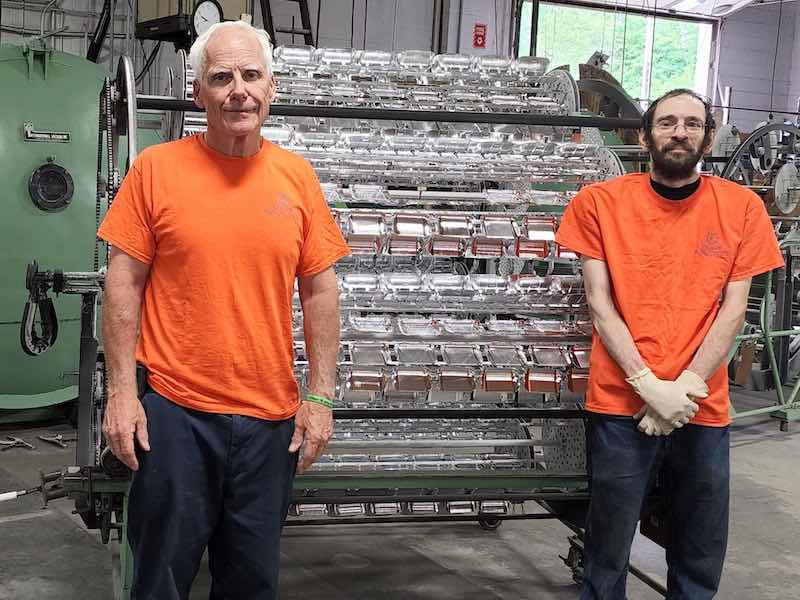Bill Knape will be the first to admit that his company’s operations have seen a lot of technology change the finishing industry.
 Bill Knape“To some extent, we have not changed with it,” says Knape, president and owner of Knape Industries in Rockford, Michigan, which offers vacuum metallizing and painting services to several industries, most notably the automotive sector.
Bill Knape“To some extent, we have not changed with it,” says Knape, president and owner of Knape Industries in Rockford, Michigan, which offers vacuum metallizing and painting services to several industries, most notably the automotive sector.
But do not take that as a necessary negative for Knape Industries, which has stayed true to its vacuum metallizing roots and not moved full force into other physical vapor deposition (PVD) applications.
The company’s vacuum metallizing gives a chrome-like finish to the desired surface for a wide range of uses, and Knape says over the last 57 years, they have come to specialize in that service rather than risk millions of dollars on PVD equipment that often brings on the need for additional equipment and input into the part design phase.
“There’s a lot to be said for having technical competence,” Knape says. “A great majority of our customers require a lot of openness; they want to call up and talk to someone who is not a salesman. They want the straight dope and not a runaround.”
Vacuum Metalizing with Aluminum
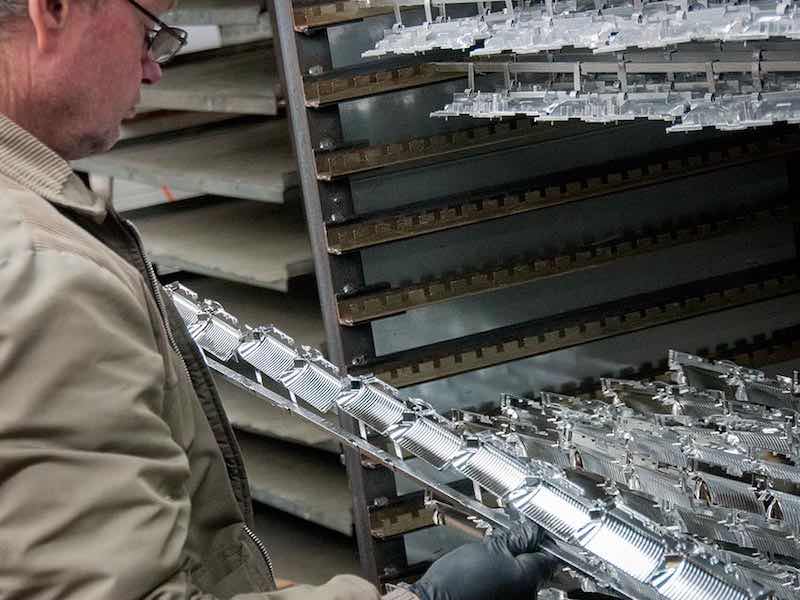 Knape Industries goes back to its establishment in 1965 when it was founded to put reflective coatings — vacuum metalizing with aluminum — on tail lamp housings for the automotive industry. With over 33,000 square feet of facility space, three batch ovens, and one conveyor oven, the company serves injection molding clients and decorate more than 300 versions of automotive emblems for car restoration parts manufacturers, too.
Knape Industries goes back to its establishment in 1965 when it was founded to put reflective coatings — vacuum metalizing with aluminum — on tail lamp housings for the automotive industry. With over 33,000 square feet of facility space, three batch ovens, and one conveyor oven, the company serves injection molding clients and decorate more than 300 versions of automotive emblems for car restoration parts manufacturers, too.
The history of the company dates back even further to 1898 when relative John Knape purchased the assets of Grand Rapids Cycle Company and set up a machine company that also quickly found a niche in the growing automotive and tooling industry around Michigan.
Knape’s father and grandfather worked at what became Knape & Vogt Manufacturing before his father, Herb, started the current Knape Industries and brought his engineering and organizing skills to the finishing industry to supply the local zinc die-coating industry with vacuum metallizing services.
The early products included tail lamps, side marker lamps, and turn signals, and the initial processes were dichromate of zinc castings, spray painting, and vacuum metallizing. They soon added electrocleaning and painting chrome and zinc phosphate as in bonderize and prime, and Knape Industry grew and prospered quickly, being profitable even in its first year.
“My grandfather was actually one of the first founders of the old American Electroplating Society,” says Knape, who has an engineering degree from the University of Michigan and an MBA from Harvard Business School.
Venturing into Decorating Plastics
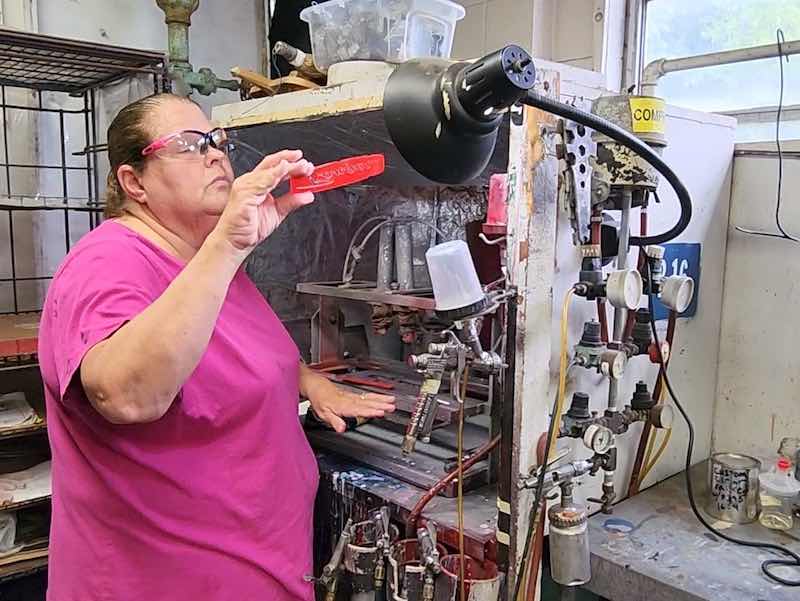 Cindy Hoffman reviewing a part she has just sprayed.The company soon ventured into decorating plastics because it was a large growth market for vacuum metallizing for both automotive — with interior and dash and panel components — and with consumer products, such as appliance parts, finishing lures, trophies, and many other products where bright chrome-like appearance was desired.
Cindy Hoffman reviewing a part she has just sprayed.The company soon ventured into decorating plastics because it was a large growth market for vacuum metallizing for both automotive — with interior and dash and panel components — and with consumer products, such as appliance parts, finishing lures, trophies, and many other products where bright chrome-like appearance was desired.
Knape says that general painting-on-plastics followed because of the natural fit with their production processes, as well as the need for finishing services for the fast-growing local injection molding industry.
A few examples of Knape Industry’s early plastics decorating projects included gear shift indicators, fascias, grilles for the AMC Gremlin, and they even sprayed and spatter coated with 2k urethane the cases for a new company called Apple Computers.
Unfortunately, Knape Industries experienced a fire in 1971 and lost all production facilities and equipment. They immediately leased alternative facilities, and the painting operations were back online in just two weeks. Vacuum metallizing jobs were subcontracted with poor results, so the proper equipment was purchased and installed in the new facility on the same site and was back up and running in just six months.
Knape says that, before the fire, the company focused mostly on metal processors, but since they rebuilt the facility, customers needing plastics coated have become more prevalent. In the 1990s, he says that paint-over-chrome, bonderize and prime, and vacuum metallizing on zinc and aluminum castings continued to grow in volume.
Automotive, Sports, and Decorative Items
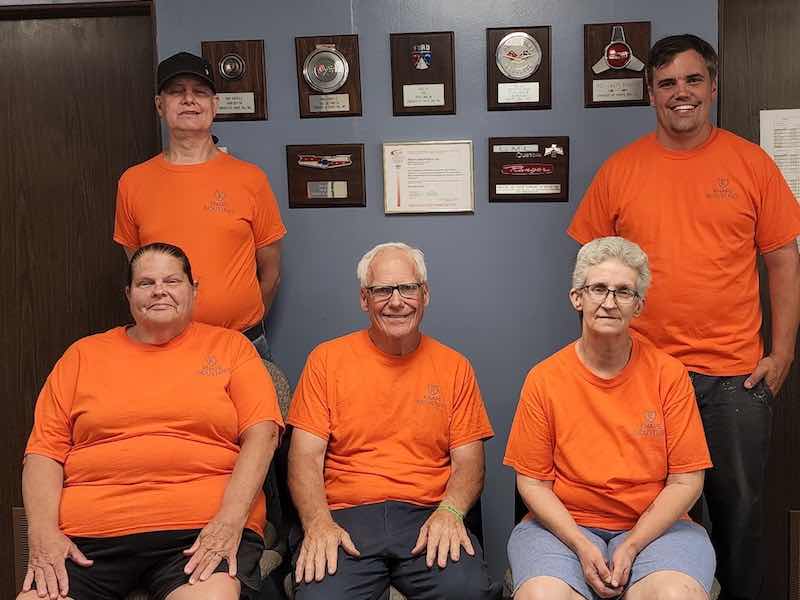 Bill and Paul Knape with long-time employees.While a lot of the work has gone overseas over the last few decades, Knape says those companies needing more expertise and quality have been consistent with his company.
Bill and Paul Knape with long-time employees.While a lot of the work has gone overseas over the last few decades, Knape says those companies needing more expertise and quality have been consistent with his company.
“After automotive, the biggest industry we find ourselves in is fishing lures,” he says. “We also have quite a bit of decorative items that you would find inside a house or car that don’t require a lot of durability requirements.”
Nearly all of what Knape Industry coats these days is on plastic, and the staff remains steady at 14 employees, although in busier times, the levels can run up to around 25 employees on staff.
The company also uses a combination of hand and machine spraying in the finishing of a wide range of products. In addition, they have pad printing and hot stamping capabilities, where ink is applied to rounded and flat surfaces, often where the designs are too small or complex for mask painting.
“The painting operation is mostly varnish, enamel, and a few epoxies,” Knape says. “When you do vacuum metallizing, you have to make the parts so that the paint would adhere, and so that the aluminum would adhere and it would be shiny.”
Serving Design Engineers and Rapid Prototype
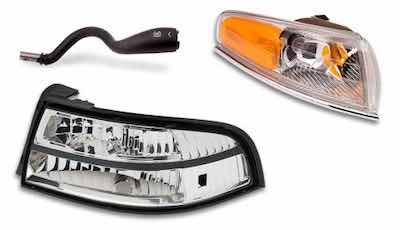 Knape Industry plans to build on its strength by serving design engineers, rapid prototype, and development firms with unique services and capabilities. Automotive lighting and plastics painting will still utilize the majority of the company’s capacity, Knape says, with low-volume prototype work growing in importance.
Knape Industry plans to build on its strength by serving design engineers, rapid prototype, and development firms with unique services and capabilities. Automotive lighting and plastics painting will still utilize the majority of the company’s capacity, Knape says, with low-volume prototype work growing in importance.
“We have concentrated for the last five years not on OEM work but on others where the margins are a whole lot better,” Knape says. “I have the stomach for the automotive work, but I’m not so sure a lot of other people here have it.”
Automotive work is currently down about 30%, which requires Knape Industry to be on the lookout for more work from industries that aren’t part of the current downturn.
“We’ve been calling on a few newer customers more in the general finishing industry, especially with our spray painting,” Knape says. “That is going to become very important to us over the next few years.”
Visit http://www.knapeinc.com





